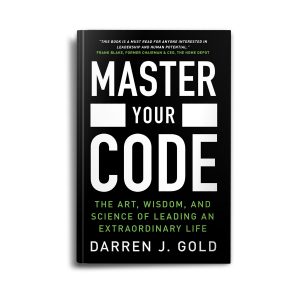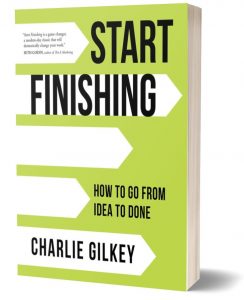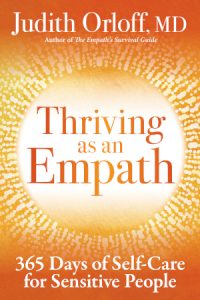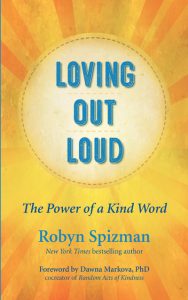Birthstones and Their Healing Properties
A birthstone is a gemstone that corresponds to the month of someone’s birth. It is thought to be lucky to wear your birthstone in jewelry in some way, to receive the energy of that stone. How did this tradition come about? Back in the first century Josephus, a Jewish historian, thought there was a connection between the twelve stones in Aaron’s breastplate, signifying the tribes of Israel, and the twelve months of the year and twelve signs of the zodiac. Around the eight and ninth centuries, it was a trend to have twelve stones and wear one a month.
In modern times, jewelers got together and officially adopted a list of which birthstones belonged with each month, and the list has been added to and updated over the years. Just for fun, let’s take a look and see what our birthstones can do for us energetically!
Anyone can wear any of these stones anytime. However, if you wear your birthstone, it is supposed to be stronger for you than it would be for others. And if you wear a stone in the month it is associated with, it with be stronger during that month. You can also have stones on display in your home or on your altar. If you find yourself feeling overwhelmed or having too much energy, take a break from wearing the stone for a while.
January: Garnet
The garnet is a deep red stone. The name garnet comes from “seed” and it represents new beginnings, so it’s great to wear when you’re starting something new. Garnet goes with the first month of January, and also the first chakra, the root chakra. Garner can help release past attachments and family karma. It’s a good stone for grounding and stability. It is also said to keep you safe while traveling.
February: Amethyst
Amethyst comes in a range of purple colors, and also in green! Amethyst is most famous for its ability to clear negative energy. It is calming, bringing peace and serenity, and it can also help you tune in to your intuition. Amethyst is widely used in healing and energy work as it is gentle, yet powerfully effective.
March: Aquamarine
The light blue aquamarine got its name from the sea and it has been used to protect sailors from the harsh ocean. The cool blue stone is good for healing, and can calm anger in relationships. Blue is the color of the throat chakra, so aquamarine is a good stone to help when you want to speak clearly, and express yourself creatively. It is also said to bring confidence and courage.
April: Diamond
Diamonds are precious, and pricey. As an alternative, you can substitute a zircon or a Herkimer diamond, both clear stones. Diamonds amplify energy, meaning that when worn with another stone, it makes that stone even stronger. Diamonds symbolize purity and eternity, which may be why they are the favorite stone for engagement rings. Diamonds are also known to bring strength and vitality to the wearer.
May: Emerald
Emeralds are brilliant green, and associated with the heart chakra. It symbolizes love and the awakening of the heart, as well as fertility and rebirth. When we talk of fertility and rebirth, it can be the beginnings of an idea, and the creativity required to bring that idea to fruition. Emeralds are also known to make the wearer magnetic, so that you can attract a person, or anything that you want. Other green stones can be used as substitutes for an emerald.
June: Pearl
The luminous white sphere that we know as the pearl comes from the depths of the sea. The ancient Greeks believed that pearls were the hardened tears of joy from Aphrodite, the goddess of love. Pearls carry lunar energy, so they are calming and cooling. They are also thought to hold creative energy so they are great for artists. Pearls are also recommended for women who want to create a healthy cycle, or a healthy pregnancy.
July: Ruby
The ruby is a bright red color, and like the garner is connected to the root chakra. It has grounding energy, and it is also protective, warding off negative energy. The ruby is known to be healing for the body, especially for any condition which affects the blood. It’s good to wear a ruby when you feel like your energy has run out, or if you’re wanting to bring more passion into your life.
August: Peridot
The peridot is a light green stone, almost an apple green. Peridot is happy looking, and it is known to stimulate positive thoughts and mental clarity. Like the emerald, if is associated with the heart chakra, and can help heal the heart after a trauma, or after the breakup of a relationship. The peridot also can reduce fearful feelings, and encourage strength and courage. You can wear the peridot when you want to keep away fear and nightmares.
September: Sapphire
The sapphire gemstone is a clear royal blue color. True blue symbolizes loyalty, as well as wisdom and healing. Like the aquamarine, the blue color helps the throat chakra and all modes of communication. Wearing a sapphire helps you to speak your truth. The sapphire can also help you to see the truth, making you more sensitive and aware of the motives of people you’re dealing with. Lapis Lazuli is considered a good substitute for the sapphire.
October: Opal
Opals and their properties vary a bit depending on the color and their origin. If you want to wear an opal, it is best that you choose it yourself so you can tune into its energy and find one that is right for you. Opals are powerful, and symbolize confidence, love, healing, protection, strength and faithfulness. They also bring protection to the wearer and keep away negativity. Opals are said to help those seeking to overcome trauma or depression.
November: Topaz
The traditional topaz is a golden color, but you can find the topaz is many other colors as well. This is another stone that you need to choose yourself so that it goes with your vibe. The topaz is good to wear or have nearby when you’re starting to meditate because it helps to clear the mind and release thoughts. It’s also good for helping to improve concentration, so you can wear it when you are studying. Citrine is a good substitute for the topaz.
December: Turquoise
Turquoise is another happy and positive stone. It brings to the wearer relaxation for the mind as well as feelings of calm and peace. It is said that turquoise helps us to be more sensitive and intuitive. It is also a protective stone. Since it is blue, it is great for healing, cleansing, and releasing.











 Over the past two decades, there has been a quiet revolution in the fields of psychology and neuroscience challenging two fundamental assumptions. The first is that humans are hardwired to experience emotions and that emotions happen automatically. Unless you’re a saint, if you’ve been honked at by a rude driver, you will have seen this firsthand. You will have experienced reacting in a way that feels completely automatic (and likely regrettable). This is certainly what seems to be happening. The proximity between stimulus (the honk) and reaction (anger) is so close that your perception was that you had no choice but to react in a certain way. To make sense of this experience, you likely have attributed this phenomenon to the myth that humans are emotion- ally hardwired.
Over the past two decades, there has been a quiet revolution in the fields of psychology and neuroscience challenging two fundamental assumptions. The first is that humans are hardwired to experience emotions and that emotions happen automatically. Unless you’re a saint, if you’ve been honked at by a rude driver, you will have seen this firsthand. You will have experienced reacting in a way that feels completely automatic (and likely regrettable). This is certainly what seems to be happening. The proximity between stimulus (the honk) and reaction (anger) is so close that your perception was that you had no choice but to react in a certain way. To make sense of this experience, you likely have attributed this phenomenon to the myth that humans are emotion- ally hardwired. Darren Gold is a Managing Partner at The Trium Group, where he advises and coaches CEOs and leadership teams at many of the world’s most innovative companies, including Roche, Dropbox, Lululemon, Sephora, Cisco, eBay, Activision, and Warner Bros. He is the author of the new book
Darren Gold is a Managing Partner at The Trium Group, where he advises and coaches CEOs and leadership teams at many of the world’s most innovative companies, including Roche, Dropbox, Lululemon, Sephora, Cisco, eBay, Activision, and Warner Bros. He is the author of the new book  The following is a modified excerpt from Start Finishing: How to Go from Idea to Done.
The following is a modified excerpt from Start Finishing: How to Go from Idea to Done. Charlie Gilkey is an author, entrepreneur, philosopher, Army veteran, and renowned productivity expert. Founder of Productive Flourishing, Gilkey helps professional creatives, leaders, and changemakers take meaningful action on work that matters. His new book is
Charlie Gilkey is an author, entrepreneur, philosopher, Army veteran, and renowned productivity expert. Founder of Productive Flourishing, Gilkey helps professional creatives, leaders, and changemakers take meaningful action on work that matters. His new book is  **Excerpted from “Thriving as an Empath: 365 Days of Self-Care for Sensitive People” (Sounds True, Oct. 22, 2019)
**Excerpted from “Thriving as an Empath: 365 Days of Self-Care for Sensitive People” (Sounds True, Oct. 22, 2019) Judith Orloff, M.D., is a New York Times bestselling author, a member of the UCLA Psychiatric Clinical Faculty, and has a Facebook Empath Support Community with more than 6,000 members. She has been featured on The Today Show, CNN, and in Oprah Magazine, the New York Times and more. Her new book,
Judith Orloff, M.D., is a New York Times bestselling author, a member of the UCLA Psychiatric Clinical Faculty, and has a Facebook Empath Support Community with more than 6,000 members. She has been featured on The Today Show, CNN, and in Oprah Magazine, the New York Times and more. Her new book,  An excerpt from Loving Out Loud by Robyn Spizman
An excerpt from Loving Out Loud by Robyn Spizman Robyn Spizman is the author of
Robyn Spizman is the author of